BAE Systems has been selected to supply 12 Bofors 40 Mk4 naval guns to the Belgian and Dutch navies as part of the Mine Counter Measures Vessels (MCMV) programme.
The shipbuilding company Kership will install the guns on the fleet of 12 mine hunting vessels – six for Belgium, six for the Netherlands – with the first ship scheduled for delivery to the Belgian Navy in 2024.
“The Bofors 40 Mk4 is a highly automated naval gun which will provide the Belgian and Dutch navies with significant firepower and great range,” said Lena Gillström, managing director for BAE Systems Bofors in Karlskoga, Sweden.
“This latest contract expands the number of European nations using the Bofors 40 Mk4, and reflects the growing interest we are seeing in the region.”
According to BAE, the system offers “high survivability and tactical freedom at all levels of conflict”, the Bofors 40 Mk4 also provides optimised ammunition types, including the cost-efficient programmable 3P ammunition. The ability to automatically switch between different types of ammunition gives a high level of combat flexibility in the face of new threats such as UAVs.
The Bofors 40 Mk4 naval gun is the latest generation in the 40mm family and is used by numerous navies and coast guards around the world. The system was most recently selected by Finland, Sweden, and the United Kingdom.


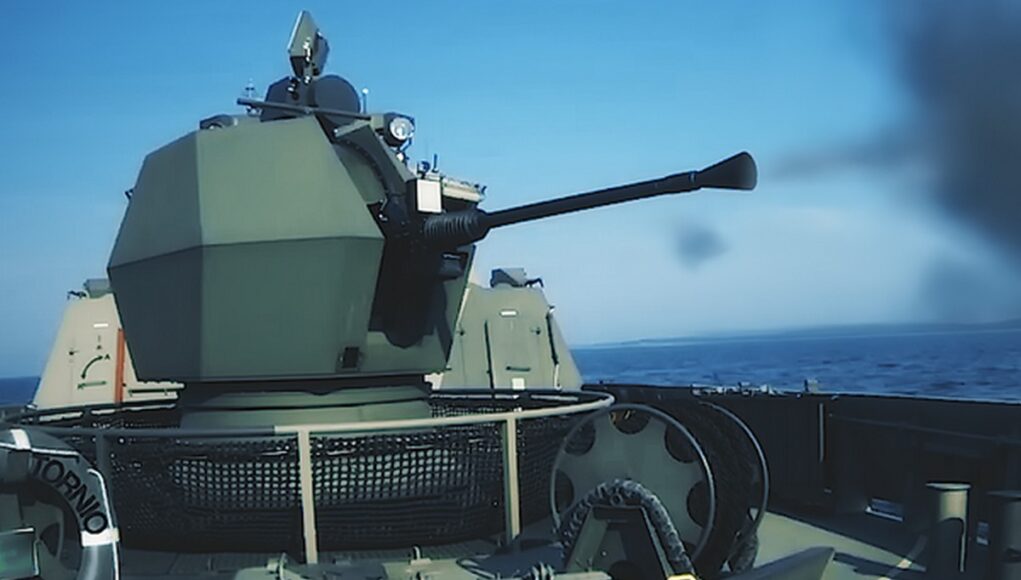
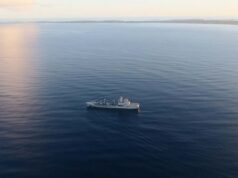
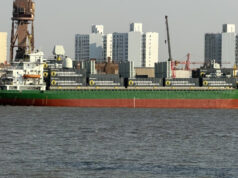
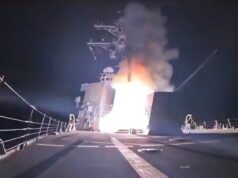
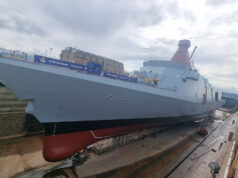
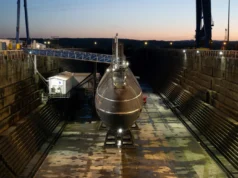

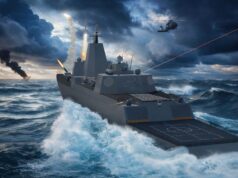
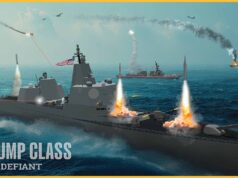
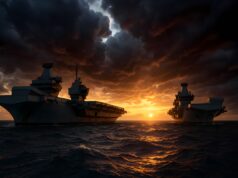
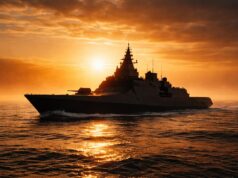

is this being done by the swedish subsidiry
It sounds like a really good system, perhaps an upgrade option for the RN River class OPV in the future?
What’s the reason?
The Bofors 40 Mk4 naval gun gives, “significant firepower and great range”? It’s a great little gun system but still a last-ditch light weapon of relatively short range. Speaking about it like it’s a decent medium ship gun stretches the hyperbole too far.
Well in the context of an MCMV I wouldn’t really say the statement is hyperbolic.
I would.
The RN best pull its finger out and decide what future they see their own concept going!
Belgium and the Netherlands are upping their MCMV game. And their recent videos and design, cooperation in building it up are very impressive
The RN has seen the future and the future is going to be USuV deployed from shore or from a mothership of some description such as a Bay, T31/T32 or even something like a STUFT Oil rig Supply Vessel. The Tupperware Navy’s days are numbered.
Low Mag Sandowns will probably be gone in a handful of years and only a few Non Mag Hunts may be retained.
Netherlands sand Belgium have a combined coastline of @ 320 miles. UK has 7000+. But those countries have ordered 6 dedicated minehunting motherships each. Are we not going to need far more rather than misusing frigates for the task?
Hi Gunbuster,
I think you are right to suggest that the current MCMV have had their day and there is definately a role for air portable / frigate compatible systems, but I do think PeterS has a point about tying up a valuable escort or large Bay Class type vessel in MCM operations, especially long term operations such as those on-going in the Gulf.
I hope the RN goes for a mixed approach. Have a smallish number of flexible vessels with a large mission bay perhaps along the lines of an enlarged River Class. Such vessels could be used for MCM operations where there is limited infrastructure, limited local political support or an on-going conflict any of which would make shore based operations unnecessarily difficult or danagerous. The air portable systems could be used from friendly shore establishments or a frigate.
If the system is designed well and procured sensibly you could focus the cost on the containerised air portable MCM system elements which should be modular and scaleable to respond to differing situations and threats. These would be used from shore or which ever ships you are planning to use in the circumstances.
The ‘specialist’ vessels could be relatively simple, unless you wanted them to fill other roles as well (cost starts to snowball obvioulsy). Certainly, I think the Bofors 40 MK4 suggests that either the Dutch and Belgian navies want to use these vessel for secondary patrol duties or they think future MCM operations may have to be undertaken in higher threat environments.
I guess if you are not going to take the people into the mine field anymore there may be the temptation / pressure to send the ‘drones’ in earlier than you would have done previously. So a decent gun might be a good idea as the drones will be a dead give away that there is a MCMV in the area!
Cheers CR
Hi CR, I kind of agree that we may see a two tier approach for the “at sea” MCM. There will still probably be a dedicated vessel for the role. But it won’t be doing the traditional sweeping. It will basically be a mothership for the unmanned sweepers that tow the search sonar, then launches a system to knock out the mine once found. But I also think that ships with a mission bay will get their own mine search and countermeasures kit.
The dedicated option is a must in my opinion. As a dedicated mothership could carry a lot more unmanned craft and therefore sweep a larger area. Whereas, the mission bay kit is more local and targeted for that ship’s needs and location.
The problem I see for a lot of these smaller systems, is that the ship has to stop to launch and recover them. Which might not always be the best option when operating near hostile waters. Whereas, the larger unmanned ones like the autonomous minesweeper system, will need constant sheparding, unless you want some lads in a speedboat hijacking it, “just for a laugh!”
The thing is CR we already tie up 4x MCMV in the Gulf … a third of our entire MCM capability … along with 4x crews, plus a Bay and its crew.
What if instead of that we, for example, used the Bay directly as a mothership, capable of the equivalent of 2x or more MCMV missions, plus another MCM mission using a shore based unit and another MCM unit from a T31? Add the Gulf escort frigate (T31, T32, or T26) and the total Gulf ship force would be 1x Bay and 2x frigate, with a total of 4x or more MCM teams for similar or greater capability to that of today.
If the situation in the Gulf suddenly worsens towards shipping, then the T31 stops doing the MCM role and becomes a second escort. The entire operation requires less manpower, provides greater flexibility and has broader utility with greater firepower than MCMV.
Conversely, consider the mission to protect Faslane, Portsmouth and Devonport and home waters. No need for a lightly armed, slow MCMV, or any naval vessel at all. We might use oil rig supply vessels, operated by the RFA or Serco, and as Gunbuster suggests STUFT for extra capacity. Serco already operate similar ships with SD Victoria and SD Northern River. The advantage here is that we might use the RNR to develop additional MCM teams that could train with their own dedicated MCM modules, independent of RN or RFA vessels and then use STUFT in a crisis. In other words a larger MCM capability over the fleet than we have today.
If we go down the path of more dedicated MCMV then their secondary role is as an OPV. We don’t need any more OPVs. What we do need is more frigates and moving to a MCM mission module strategy provides the best chance for us to get more frigates.
One other thing to ponder. Would you rather be in MCM vessel like the Dutch/Belgian ships or a T31 if undertaking a MCM mission off a hostile shore, with the threat of FIAC or shore launched ASM.
It seems to me that Phalanx type systems are being made effectively useless by hypersonic missiles like the Brahmos II and Zircon anti-ship missiles.
Some simple calculations.
A Zircon is reported to travel at least 2,700 meters per second.
Phalanx fires 75 rounds per second, at 1,100 meters / sec, with a max effective firing range of 1500 meters.
A Phalanx firing at 75 rounds for a second results in one round every 14.6 meters. For an incoming vampire travelling in an absolutely direct straight line at the Phalanx barrel that’s fine. So long as the rounds are in flight when the incoming enters the max range the missile will be destroyed.
But here’s the problem if the incoming missile trajectory is even a few degrees offset from the direct line of fire then the chances of actually hitting it become much reduced. I think the maths works out at the chance of a hit is 1 in 36. This is only for the horizontal angle offset, with no ballistic factor, my head hurts too much to try and work out the effect of a vertical offset may also have.
This is for the rounds being fired across the trajectory of the incoming. If the rounds are fired to try and track and hit the moving target rather than across it, the odds of a hit needs a computer to estimate, but they are massively higher than 1 in 36.
These calculations may not be spot on but the principle is. Once there is any divergence in intersection angle,the odds of a Phalanx round hitting an incoming hypersonic missile becomes unacceptably low.
It seems to me the better approach is let the missile hit the round rather than the round hit the missile.
A 40 mm Bofors firing 5 rounds/sec , with each round containing with 100 projectiles, each weighing 8g, programmed to explode at between 1500 m and 2000m, would result in a cloud of 500 projectiles each second over a 500m distance for the missile to fly into. Each 8g fragment would have an impact force of 6500 kilogram/meter providing enough energy to rip the missile apart.
A 57 mm Bofors firing 4 rounds /sec could place a cloud of 1000 fragments in front of an incoming missile each second.
The effect of angle offset becomes more acute the larger the vessel. The QE carriers I believe have zero practical chance of knocking down even the relatively slow hypersonic missiles already in service such as the Brahmos 1.
Italian Navy replaced the dual Breda Bofors with 76mm OTO guided rounds for this reason, The Dutch Navy also choose the 76 OTO with guided rounds but also added RAM missile , this combo replaces the Goalkeeper.
USN does not have Phalanx in the new frigates only a RAM.
It is the end for Phalanx.
The bigger the caliper the better. The more the better.
The issue is that you are not accounting for phalanx self correcting the fall of shot to a zero miss distance and the Mount training to the missiles head on approach.
If a missile is inbound phalanx trains to reduce the crossing angle to as near to zero as possible. The Threat evaluation software won’t allow an engagement if the crossing rate is such that a missile does not present a threat of hitting the ship.
Zircon has not been proven in the ASM mode. Its hit a static target at sea via GPS and that’s it. Hypersonic introduce serious targeting issues. Heat from friction negates and degrades IR homing. Radar homing needs an erosion resistant radome which again isn’t an easy thing to do.
At high speed rapid turns which are needed to hit a target introduce g forces that will tear a missile to bits.
Any homing missile has a limited window or angle of look to see a target. No missile sees 180degs from its homing head. The look angle is usually a few 10s of degs at most… Mostly far less. . If the target isn’t in the look angle homing basket then it won’t see the target and will miss.
A 300 + mile range missile is useless without mid course guidance even at high mach. It’s the equivalent of shooting a rifle bullet at a moving car and not allowing for the cars movement. You will miss.
The Western navies have been up against mach 4.5+ missiles since the early 60s. From experience they know how to counter high mach missiles.
Soft kill, EW, vessel manoeuvring, disruption of the kill chain are a factors that need considering before phalanx even gets to engage.
PS if there are typos or it seems disjointed please excuse me. Its virtual friday here and I am 3/4 of the way through a rather good bottle of tequila!
Self correcting is fine if it works. The soon to be replaced Brahmos, at Mach 3.5, enters the Phalanx max effective range 1.25 seconds from impact. Now assume the self correction is instantaneous the corrected round and the incoming can only meet at 575 meters or 0.48 sec from impact. Even if the 1st corrected round hits the target the vessel is at best hit by the an almost undissapated presure wave followed by an expending coneof shrapnel still travelling at hypersonic speeds.
But in the real world the correction is not instant. Allow 0.25 seconds to register a miss, to calculate in 4 dimensions the predicted interception point, then make the physical adjustments. This then provides a real world time of 0.23 seconds before the correct round might hit the missile. That’s puts the vampire exploding 265 meters from the ship. That makes one hell of a mess.
To address your other points. Soft kill, EW, and especially vessel manoeuring are rendered at least uncertain by AI sensors. I agree that a hypersonic missile in the terminal phase cannot jink about but it does not need to. At distance only moderate evasive capability is necessary. But this was not under discussion.The discussion was Close In defence.
I stand by my point that the simple maths indicate that placing a wall of lead for the missile to fly into than trying to hit a hypesonic target is the best method.
I’m interested in what 4.5+ AS missiles have been a threat since the 60’s.Not being funny, just don’t know.
One last point. On 17 November 7 short range rockets were fired at the Green Zone in Baghdad. A Centurion ( Block 1 Phalanx ) engaged. It reports indicate that not one of the rockets was hit. “Some landed in the Green Zone, some outside killing a young girl.” The video clips seem to support this as the rounds are seen self detonating, to avoid collateral damage, but there is no sign of an intercept. That does not instil confidence.
From my own personal experience operating “North of Baghdad”. The US base we were using had C-RAM (land based Phalanx). These were mounted on 20ft high earth mounds to give a better all round view. They were pretty much in daily use. Each C-ram has a siren that activates slightly before the gun fires. The first time it went off, I stood there wondering what the siren was and meant, nobody had mentioned it during the briefings? The next thing the gun slews round, elevates and lets rip. So like a dumbass, I stood and watched – duh! On that day it was intercepting mortar shells. I think at least two, as the gun momentarily changed positions when firing. What you are supposed to do, is take shelter and don your lid and armour. This may save you from the explosion if the shell gets through, but it is supposed to protect you from falling shrapnel. After a artillery shell, unguided rocket or mortar shell is shredded by the C-RAM, there is a lot of debris. When the tungsten rounds hit, the combined masses plus kinetic energy literally rips the object apart into very small chunks and powder. The system definitely scores hits, there generally is no explosion, only a firework like display, as the incoming is shredded. On the occasions that I remember, I believe the system worked mostly, there were the odd few that got through.
The Phalanx system uses predictive trigonometry to put the 75 rounds per second in the expected path of the incoming object. The radar has a range greater than 5km, so the system will see the threat before it can engage. The radar uses a track will scan (TWS) mode. This allows the system to search for other targets, whilst still illuminating the target and following the path that the rounds take to the intercept point. This allows it to constantly update the intercept point if the target is doing evasive manoeuvres. The TWS mode also allows it to prioritise targets. For example if it detects two missiles approaching one being sub-sonic the other being supersonic. The radar will measure the approaching targets velocity and see one is travelling much faster than the other. It calculates the two missiles time to impact and then prioritises the most immediate threat.
It will engage when the object passes a threshold (range gate) and place the rounds at the gun’s maximum effective range to converge at the intercept point. The system will keep firing at the object until it detects a significant velocity change or losses track when the target no longer returns a sufficient reflection. It will then slew onto the next target. The system has an digital camera that is also used to positively identify the target. An operator should be able to see if the target still remains a threat and can then re-prioritise the next threat if required.
The Phalanx system should always be considered the last resort, just before the ship is turned to present a smaller target. Before it is used the surface to air missiles are the ship’s main defence, if they fail, it is down to active then passive countermeasures and decoys.
Radar guided anti-ship missiles (ASM) are quite dumb. As GB mentioned above, the forward field of view which is generally a fixed forward facing cone. Only a few ASMs have a gimbal to allow the radar to sweep. The majority also use a basic pulse doppler radar, this allows it to spot a ship amongst surface clutter, but doesn’t have the resolution to map the target for positive identification, unless we are considering Spear-3 with its 90 GHz millimetric radar. This means they are susceptible to passive countermeasures such as chaff and inflatable decoys. I would also say that if they had a moving target indicator mode, which compares a target’s relative velocity with its surrounds, again this can be mitigated by chaff, as the missile’s radar beam is quite wide to help it search for a target. Therefore, it doesn’t have ability to “burn through” the chaff as a narrow beamed AESA radar could do. The missile will fall into its default setting of locking on to the largest radar return.
Today’s active countermeasures are a leap forward in capability compared to those 10 years ago. This is down to two major developments, digital radio frequency memory (DRFM) and cheap digital signal processing (DSP). In reality both of these go hand in hand. DRFM has the ability to copy the radar waveform in its entirety. It can then retransmit this copy back to the threat’s radar or manipulate it, to provide false images. Radar DSP used to be astronomically expensive. However, it was discovered that by using PC graphic cards that could handle high bandwidths of floating point calculations needed for ray tracing in games etc, it made radar Fast Fourier Transformation (FFT) calculations easily scalable, but most importantly cheaper to do. When DRFM is combined with DSP it can manipulate the copied waveform in near real time and can even spoof AESA radars.
“Radar guided anti-ship missiles (ASM) are quite dumb. As GB mentioned above, the forward field of view which is generally a fixed forward facing cone.”
Sorry but that is ridiculous.
It does not make sense to consider that ASMs stood still in 80’s tech and everything else moved to XXI century.
Not so ridiculous. The latest version of Exocet the MM40 Block 3c has a combined inertial navigation system with GPS for over the horizon targeting. At about 12km the radar is activated. The radar uses a flat planar antenna, that can be swept in azimuth by about +/-20 degrees. The “c” stands for coherence. This is a new Exocet radar built by Thales. They say it is a digital radar, but is still an old school pulse-doppler not an AESA. The MBDA blurb for the new Exocet states: “Processing is the ability to differentiate relatively small differences in velocity (which correspond to small differences in phase). This coherent target processing technology offers Doppler resolution/estimation and provides less interference and signal/noise benefits relative to non-coherent processing. This will make it more resistant to the latest jamming systems”.
Right, let’s cut the chase, this type of Doppler technique is not new and has been around since the 90’s. It is a means of mitigating the effects of chaff. However, the Doppler delta requires a large velocity change between the reflections to identify targets. For a ship this isn’t a problem as the chaff’s relative speed will be dependent not only the wind speed but the relative angle and velocity change of the ship, so if it kept its speed the same as the chaff cloud’s drift speed it would disappear, as there’s no Doppler variation.
Any mechanically scanned radar that uses a flat planar antenna generates relatively large sidelobes. The sidelobes are wasted waveform energy and is intrinsically part of the antennas design. You can use Yagi style elements on the antenna face to reduce the amount of sidelobes, but it won’t remove it. You also use time-angle filtering so that the signal processing ignores it.
However, the radar’s sidelobe generation is a weak point that all modern jamming systems exploit, by introducing a variable phase shifted return signal that also varies in amplitude. This kind of jamming signal can lock up a radar or generate false images. A modern radar such as the Captor-M as used on Typhoon is another pulse-doppler radar, that uses sidelobe suppression techniques, but compared to the system used in Exocet, it has the available volume to dedicate circuit cards purely for this job. As an example, if you have a PC with a modern Nvidia 2080 graphics card. This is pretty much top dog for PC gaming (that’s in stock). Modern digital radars use these types of cards for digital signal processing for Fast Fourier Transformation (FFT) calculations. The cards are very good at floating point calculations required for ray tracing. The floating point calculations are similar to FFT
The Typhoon’s Captor-M has the equivalent of at least 30 of these cards, the Exocet’s radar possibly 1.
These types of card are used for various radar modes, such as synthetic aperture, where you build up a target’s image over time. However, the greater the processing power the less time is required. This is why I state that Anti-Ship Missile (ASM) radars are quite dumb. Yes, the new MM40 Block3c radar is more advanced than the one fitted to Exocet that was used against our ships in 1982. However, what the radar can actually achieve through signal resolution, fidelity, anti-jamming etc is quite limited, due to the limited volume the radar can occupy and thereby the amount of signal processing available to the radar. Then there’s the cost trade-off. How much are you willing to spend on a radar that is only used once? The more expensive the radar, the more expensive the missile becomes.
Davyeb. I would not be so stupid to pretend I have any experince of this. ( Although I have been shot at with RPG and AK’s)
The point of my post was to express concern that the people in harms way may not be getting the protection deserved.
I fully acknowledge that there are many with real expertise. But I think I have provided sufficient reason to consider if the continued commitment to Phalanx for ship defence is prudent.
As I mentioned, you must consider the Phalanx as literally the last line of defence. The idea being that it “should” put up a wall of tungsten the incoming threat has to get through. But don’t forget, the ship should have a few more tricks up its sleeve before that happens. Because of the very high volley firing speed of SeaCeptor, a point defence system like RAM becomes less important, especially when SeaCeptor has a ridiculously short minimum engagement range.
However, for something like a RFA, which often sail on their own, Phalanx becomes significantly more important as an air defence system, rather than a Frigate/Destroyer’s last line of defence. The RFAs do use passive countermeasures, but because they are such a large radar target, a missile’s radar will find it easier to reacquire and lock on. So for a RFA, I would say RAM would have more use, as it pushes out the effective engagement range.
In support of my post below I present this quote from the article “Why Russia’s Hypersonic Missiles Can’t Be Seen on Radar.”from military.com.
“Hypersonic weapons such as Russia’s 3M22 Zircon fly so fast and low — at speeds of up to Mach 6 and at a low atmospheric-ballistic trajectory — that they can penetrate traditional anti-missile defense systems.
The missile flies with an advanced fuel that the Russians say gives it a range of up to 1,000 kilometers. And it’s so fast that the air pressure in front of the weapon forms a plasma cloud as it moves, absorbing radio waves and making it practically invisible to active radar systems.
U.S. Aegis missile interceptor systems require 8-10 seconds of reaction time to intercept incoming attacks. In those 8-10 seconds, the Russian Zircon missiles will already have traveled 20 kilometers, and the interceptor missiles do not fly fast enough to catch up.”
I still say Phalanx CIWS are on the verge of obsolence.